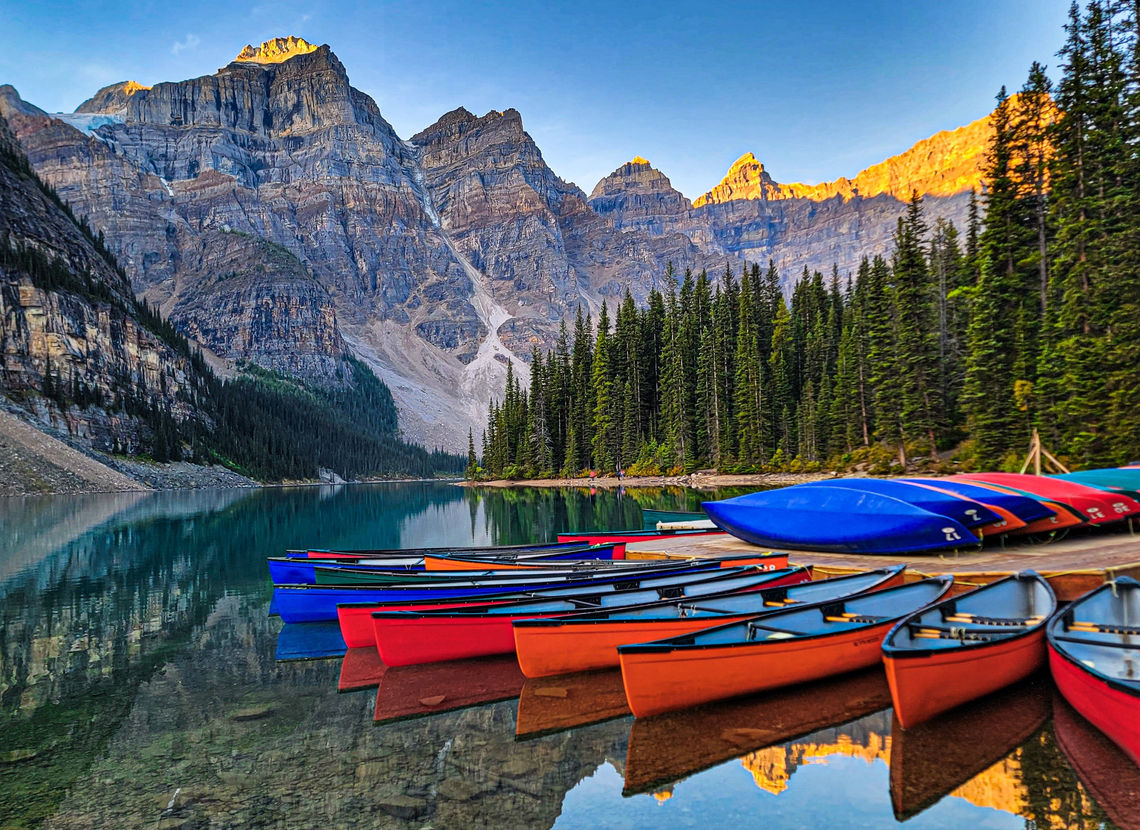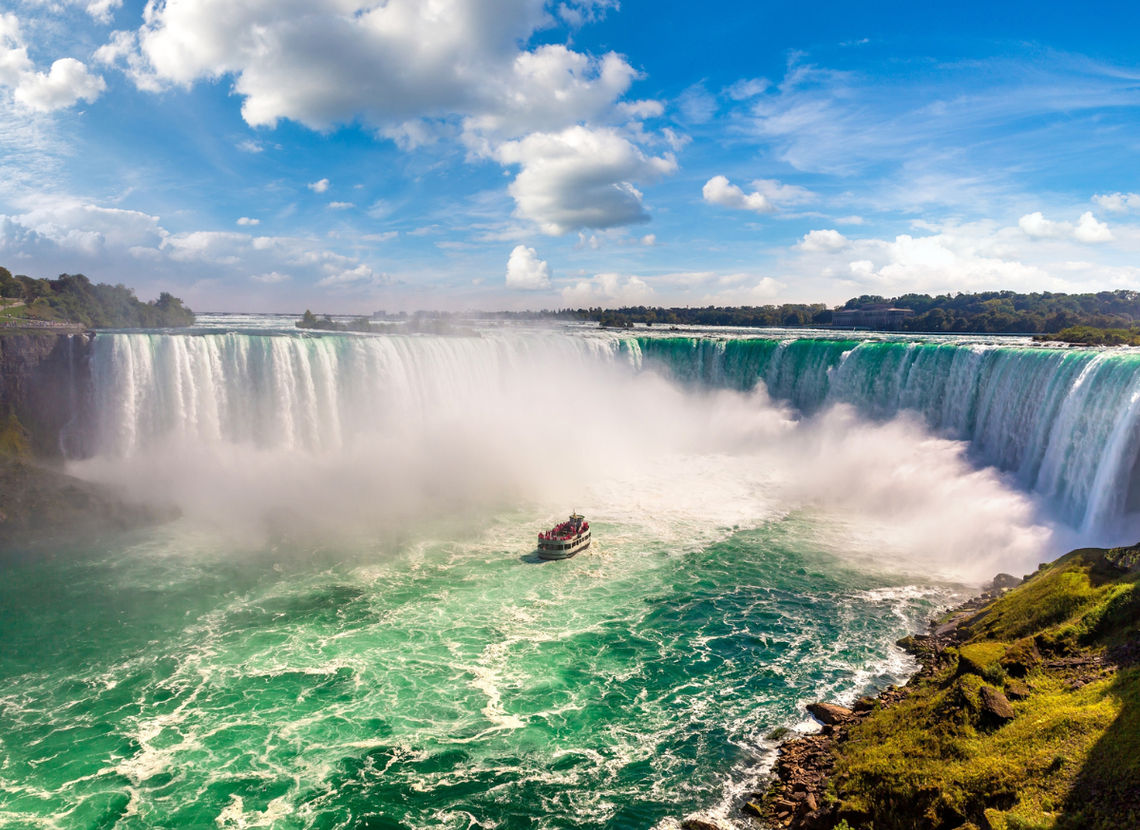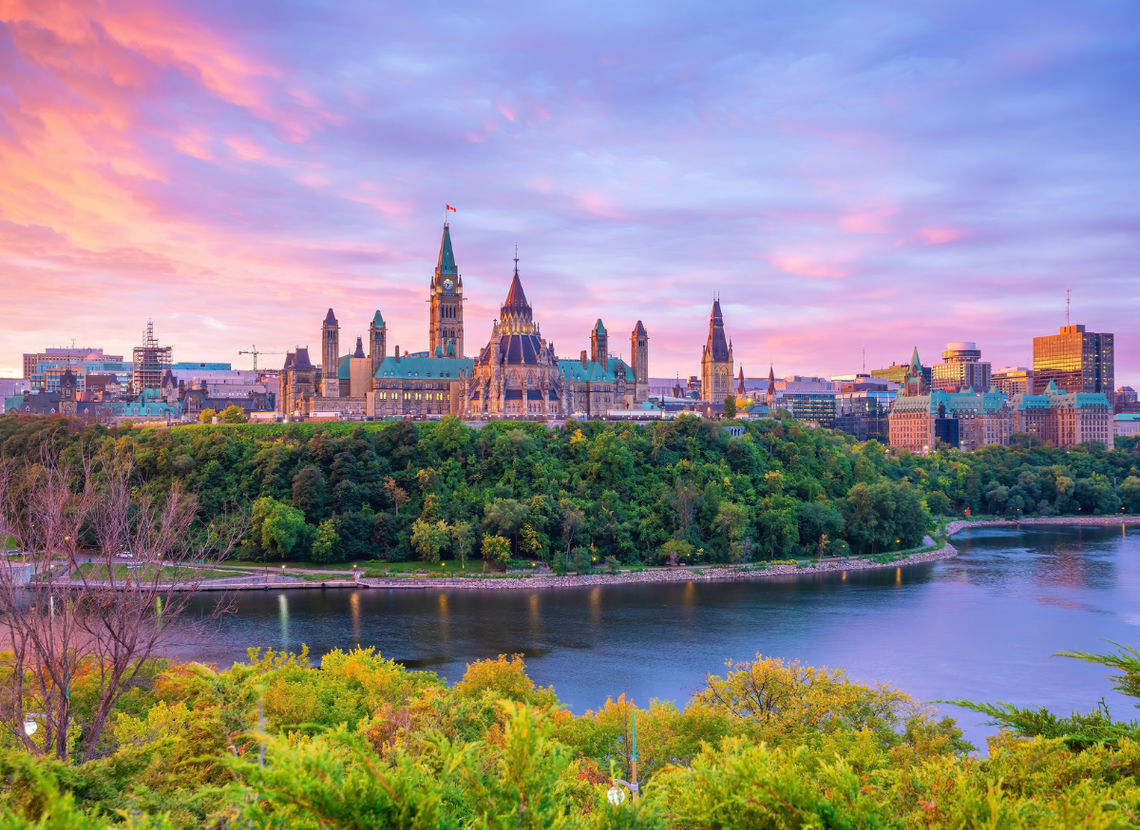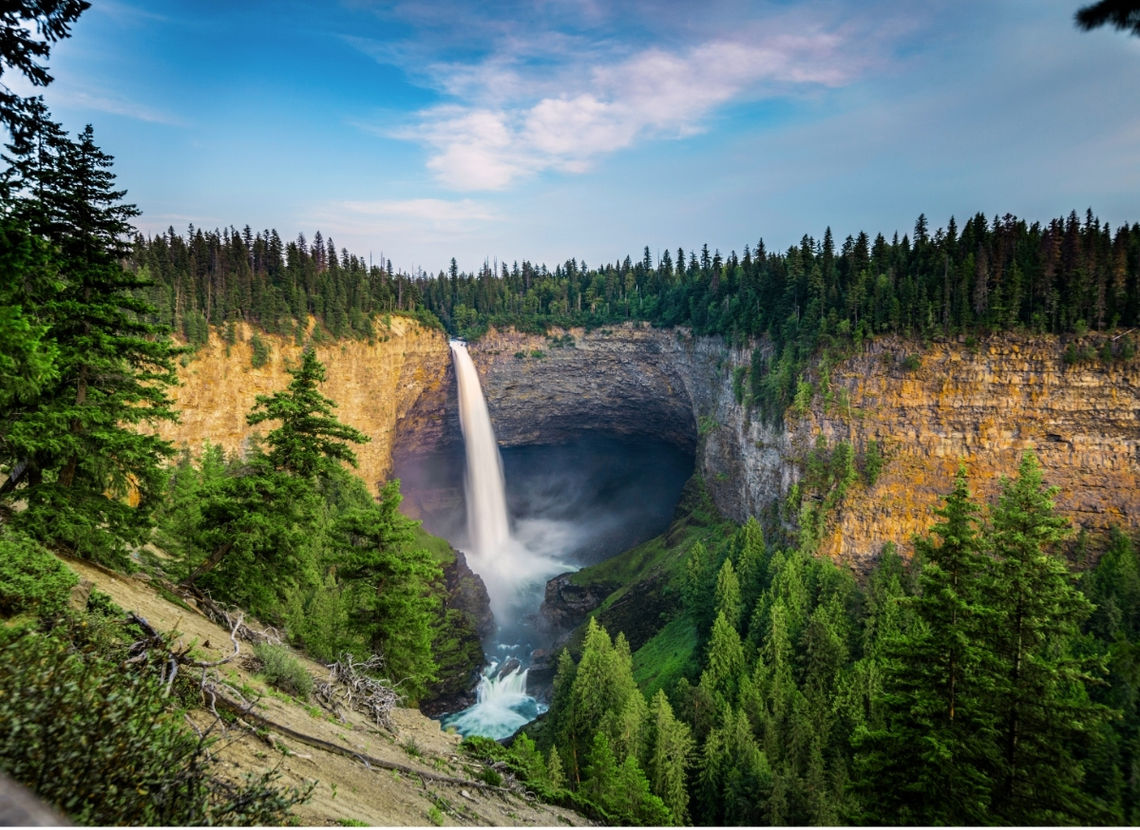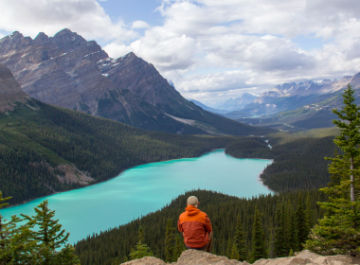Travel reviews
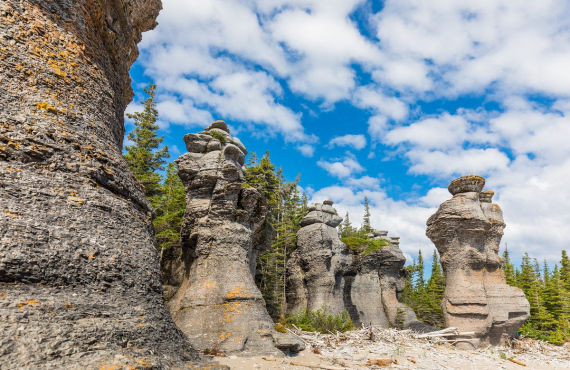
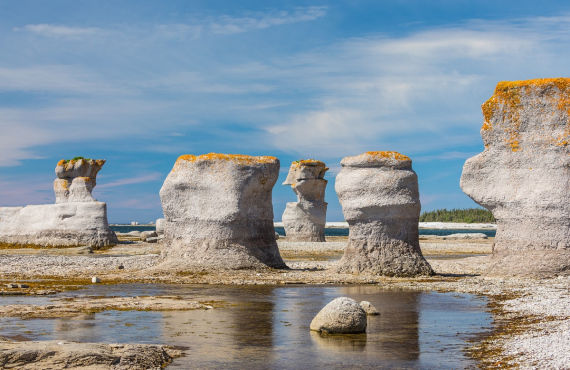
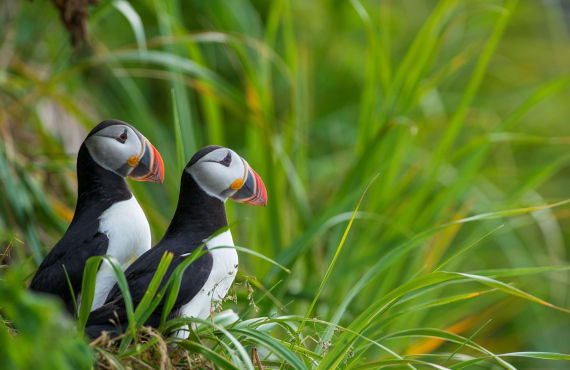
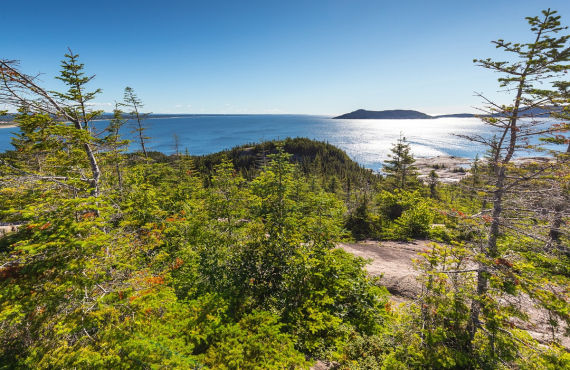
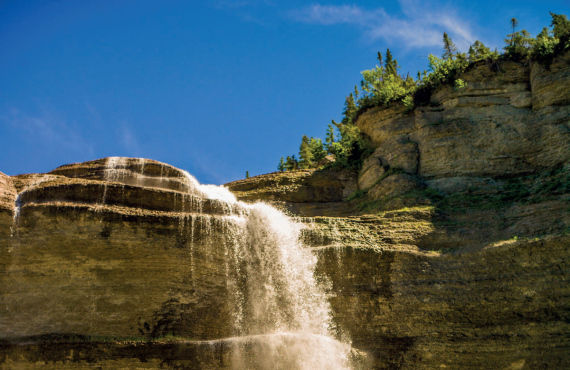
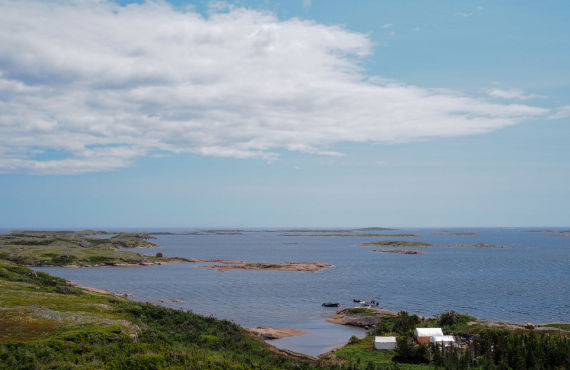
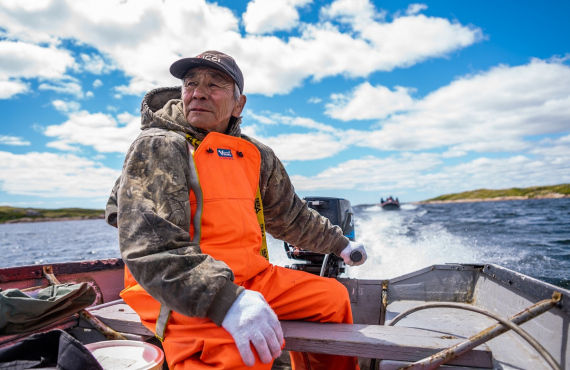
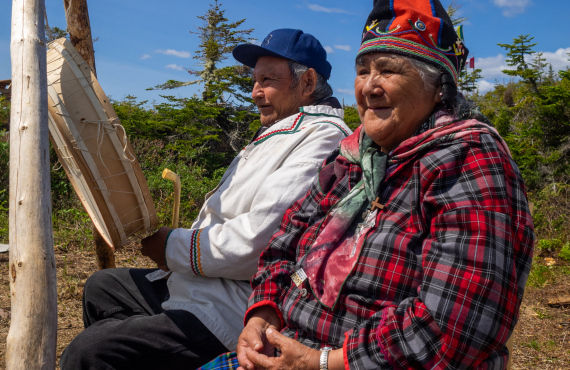
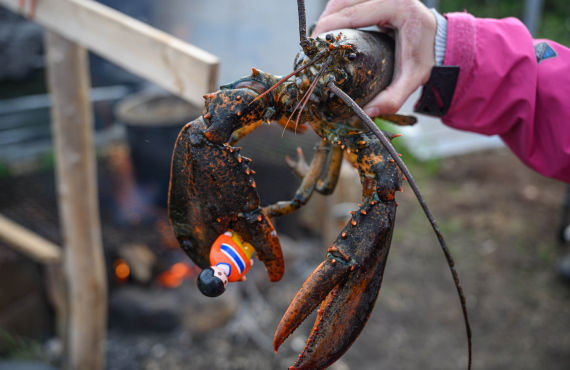
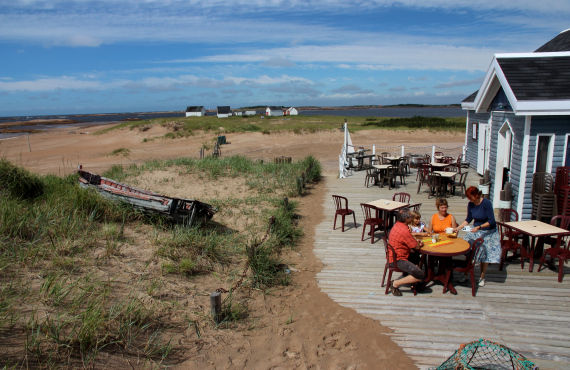
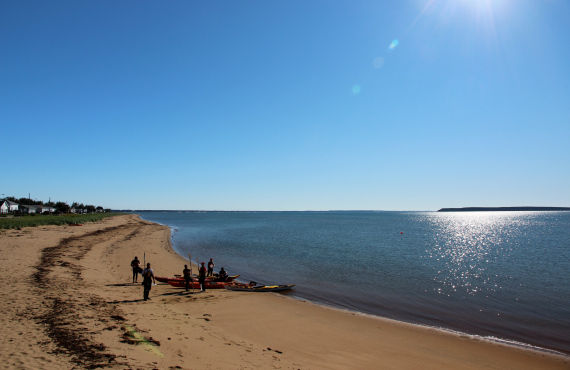
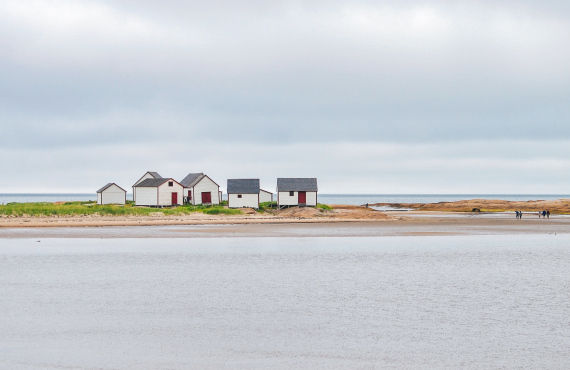
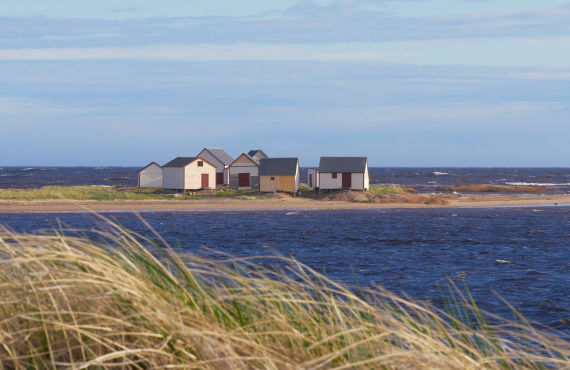
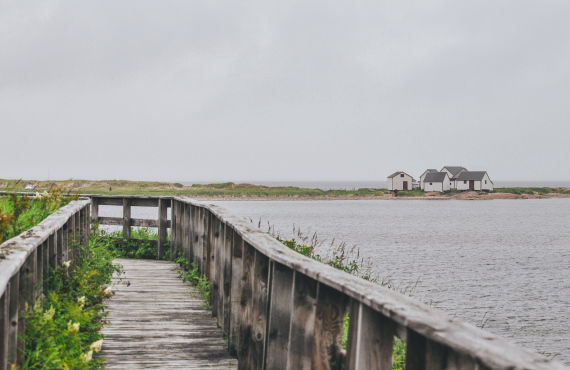
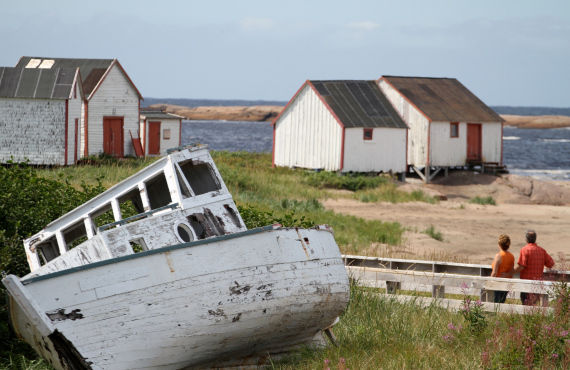
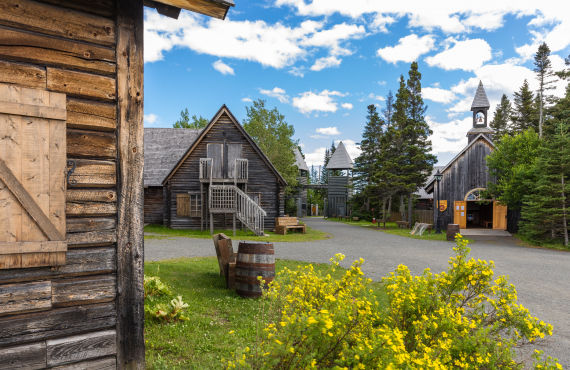
What to do
- Noteworthy
- Worth the detour
- Must see
The Côte-Nord, meaning litterally “North Shore”, the 2nd largest region of Quebec, is located in the eastern part of the province, on the northern coast of the St. Lawrence River and Gulf. It also includes the magnificent Anticosti Island, the largest island in Quebec. The economy of the North Shore is primarily focused on fishing, forestry, and the mining industry. There is also a significant presence of Indigenous communities.
Here, you will experience a unique travel journey. This vast wilderness, with its fresh air, breathtaking landscapes, rich history, and fascinating culture, will surely charm you. Discover coastal landscapes made up of rivers, islands, and islets, as well as an abundant marine life including several whales and various bird species. You're guaranteed to fall in love! Welcome to the Côte-Nord!
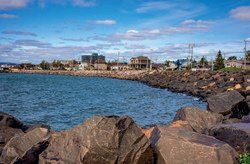 Sept-Îles
Sept-Îles
Sept-Îles, located in the Sept-Rivières region, fascinates with its Innu culture and major industries. The city offers you many activity options.
Archipelago of the Seven Islands
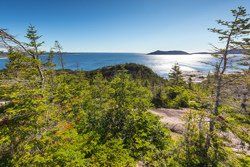 You will be amazed by this grandiose nature in its wild state. Each island in the archipelago has its own unique charm. Corossol Island is known for its bird sanctuary. Near Grosse Boule Island, there is a blue mussel farm. Grande Basque Island is the only one developed for hiking. Marine world interpretation activities with a naturalist are also offered here. Departure from the marina located at the Old Port Park.
You will be amazed by this grandiose nature in its wild state. Each island in the archipelago has its own unique charm. Corossol Island is known for its bird sanctuary. Near Grosse Boule Island, there is a blue mussel farm. Grande Basque Island is the only one developed for hiking. Marine world interpretation activities with a naturalist are also offered here. Departure from the marina located at the Old Port Park.
Regional Museum of the North Shore
This museum aims to promote the historical, artistic, and cultural heritage of the North Shore. It features various exhibitions. The permanent exhibition "Lands of Meaning: The Great Journey" lets you discover the human adventure that began around 9,000 years ago on this land. This visit offers an interesting perspective on regional history. The museum shop also allows you to make original purchases: works by regional artists, products derived from ongoing exhibitions, and other beautiful creations.
Old Post
The Old Post of Sept-Îles is a historical interpretation site that transports you to the 19th century, into the daily life of a fur trading post. A surprising experience awaits you here, inspired by the meeting of Innu and Euro-Canadian cultures. You can, among other things, see an interesting interactive exhibition and visit an Innu camp.
The Minganie
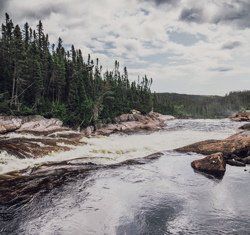 The Minganie region is a jewel of the North Shore, which includes Anticosti Island and Havre-St-Pierre. Guaranteed favorite!
The Minganie region is a jewel of the North Shore, which includes Anticosti Island and Havre-St-Pierre. Guaranteed favorite!
East Manitou Trail
Length (round trip): 2 km
Duration (round trip): 1h
Level: Intermediate
Elevation: 62 m
On the way to Longue-Pointe-de-Mingan, don't hesitate to stretch your legs by going to observe the impressive Manitou River falls. There are two hiking trails: a shorter one on the west side and a longer one on the east side of the river. The East Manitou Trail leads you to the spectacular Manitou falls at a height of 35 m. The parking lot for the hike is located at the Minganie tourist information center. Access to the trail will cost you a few dollars.
Open from mid-June to mid-September.
Longue-Pointe-de-Mingan
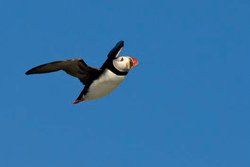 Founded in 1849 by fishermen from the Paspébiac region in Gaspésie, this small village owes its name to a sandy point that protrudes towards the Gulf of St. Lawrence. You can enjoy a long fine sandy beach here; however, the water is quite cold. A wooden boardwalk has been installed along the shore. Opposite the village are the first islands of the National Park of the Mingan Archipelago, including Île aux Perroquets where many puffins reside in the summer. Enjoy your time here to take a walk along the coast and observe marine mammals or venture into the hinterland paths to discover beautiful lakes.
Founded in 1849 by fishermen from the Paspébiac region in Gaspésie, this small village owes its name to a sandy point that protrudes towards the Gulf of St. Lawrence. You can enjoy a long fine sandy beach here; however, the water is quite cold. A wooden boardwalk has been installed along the shore. Opposite the village are the first islands of the National Park of the Mingan Archipelago, including Île aux Perroquets where many puffins reside in the summer. Enjoy your time here to take a walk along the coast and observe marine mammals or venture into the hinterland paths to discover beautiful lakes.
Innu Cultural House of Ekuanitshik
Between Natashquan and La Romaine, the Innu Cultural House of Ekuanitshik is a place of cultural sharing and lifestyle of the nomadic Innu people. It is also a meeting place for the community. It is located on the former summer camping site of the Innu. You will learn a lot about life on the islands, the ancestral land, the importance of elders, salmon, small fruits, medicinal plants, and much more...
Mingan Islands Cetacean Study Station (MICS)
The MICS is a non-profit organization dedicated to the ecological study of marine mammals. The research and interpretation center also includes a museum with murals, beautiful photographs, and a wealth of information shared by researchers. To increase your chances of seeing whales, it's better to get to know them!
THE NORTH SHORE WHALE ROUTE!On the shores of the St. Lawrence River, several sites are renowned for the quality of marine mammal observations, so much so that Highway 138 has been named the "Whale Route". 13 different whale species have been recorded in the estuary, including the largest mammal on the planet, the great blue whale. In total, between Tadoussac and Blanc Sablon, there are 25 land-based observation sites. Here are a few of them: Sept-Îles: Airport coast, mouth of the Brochu River, and Old Port Park |
Anticosti Island
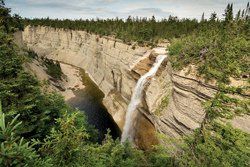 Renowned for its miles of beaches, lighthouses, clear rivers, abundant deer, and serene bays, Anticosti Island is a hidden treasure in Quebec. During the crossing, keep your eyes open; you might get the chance to see marine mammals.
Renowned for its miles of beaches, lighthouses, clear rivers, abundant deer, and serene bays, Anticosti Island is a hidden treasure in Quebec. During the crossing, keep your eyes open; you might get the chance to see marine mammals.
Port-Menier Village
Port-Menier is a small fishing village located at the western tip of Anticosti Island. It's the only real village on the island. It was founded in 1900 by the French chocolate industrialist Henri Menier, who bought the island in 1895 to make it a private hunting and fishing reserve. Port-Menier now has only 250 permanent residents, but the population doubles during the tourist season in summer and fall for hunting.
THE MENIER ERAIn 1895, the development of Anticosti Island was undertaken by Henri Menier, a wealthy French chocolatier, heir to a family that made its fortune in the pharmaceutical industry and cocoa. He had long dreamed of acquiring an island to make it a paradise for hunting and fishing.
Henri Menier's most significant intervention on Anticosti Island was certainly the introduction of several animal species, including the Virginia deer, which is still one of the main attractions of the island today. |
Scuba Diving and Snorkeling
Ruins of Henri Menier's Castle
Located at the back of the Gamache Bay, the Castle of chocolatier Henri Menier was built between 1900 and 1905 according to plans by architect Stephen Sauvestre. Upon Menier's sudden death in 1913, at the age of 60, his brother inherited the island and ended all these projects. The castle was deliberately destroyed by fire on October 3, 1953. Today, you can observe its foundations and imagine the scale of the building.
Baie Ste-Claire
A few minutes from Port Menier is the old village of Baie Ste-Claire, once called English Bay. Upon his arrival in 1895, Henri Menier changed the village's name to honor his mother and developed the area to make it the administrative center of the island. However, since it was difficult for boats to dock there, construction of a new village named Baie-Ellis began just a few years later. Abandoned for a long time, the site is now covered in hay and frequented by Virginia deer.
West Point
3 km from Baie Ste-Claire is West Point, where an old lighthouse stands guard and there is a small inn. At the time, Anticosti Island was a nightmare for navigators due to its strong currents, high winds, and reefs. The West Point Lighthouse was built in 1854. This place is very photogenic. Wreck of Calou, cemetery, houses, blazing sunset, and abundant wildlife. Let yourself be inspired!
Boulay Falls
Boulay Falls is a beautiful 8-meter-high waterfall cascading down a stair-shaped cliff. It is named after François Boulay, who obtained a logging contract in this area in 1951. It is located where the Grand Ruisseau connects the lake of the stream to the northwest end of the island.
Carleton Lighthouse
Nestled atop a cliff, this mythical lighthouse is one of the most recognized on the island. It is useful for ships departing from Sept-Îles and heading towards international waters. Formerly a SÉPAQ information center, the buildings now bear the marks of time. It stands on Carleton Point in the north-central part of the island.
ANTICOSTI ISLAND NATIONAL PARKLocated in the heart of the island, the national park invites you to discover extraordinary attractions. This protected and privileged place is part of the SÉPAQ network. It is open during the summer season from late June to late August. There is a visitor center at Port-Menier and a service center at McDonald (north side). |
Wilcox Wreck
Long dubbed "the cemetery of the gulf" by sailors, Anticosti Island has caused several shipwrecks. The Wilcox is one of the most impressive wrecks on Anticosti. This old minesweeper ran aground in 1954 during a storm. It has now become an inescapable attraction. You can take magnificent photos there! It can be found at Pointe-Carleton in the north of the island.
Vauréal Falls
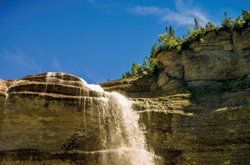 Another must-see! This idyllic spot is the perfect place for a picnic. To get there, you must take a coastal road composed of bays, capes, and sandy shores. The waterfall stands 76 meters high and falls into a stunning canyon. Menier named it after one of his residences located in Vauréal, France.
Another must-see! This idyllic spot is the perfect place for a picnic. To get there, you must take a coastal road composed of bays, capes, and sandy shores. The waterfall stands 76 meters high and falls into a stunning canyon. Menier named it after one of his residences located in Vauréal, France.
Potato Cave
Explore Potato Cave, one of the largest underground cavities in Quebec, with its 625 meters length. This unusual excursion is done with a helmet and headlamp available for rent at the McDonald service center. A rocky trail descends to the level of the Potato River and then to a large hole in the cliff. The impressive opening is 10 meters high by 7 meters wide!
Baie de la Tour
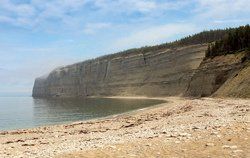 This magnificent bay, located on the northern side of Anticosti Island, is surrounded by two steep stone cliffs and its beach is made up of cobbles. The view from the beach is breathtaking. When the sun shines, the water is turquoise. You can also observe seals, whales, and many seabirds there. Magical place!
This magnificent bay, located on the northern side of Anticosti Island, is surrounded by two steep stone cliffs and its beach is made up of cobbles. The view from the beach is breathtaking. When the sun shines, the water is turquoise. You can also observe seals, whales, and many seabirds there. Magical place!
THE FROG, THE ONLY AMPHIBIAN ON THE ISLANDHenri Menier thought there were too many mosquitoes on his island, so he introduced the leopard frog to reduce the bothersome mosquito populations on his exceptional hunting territory! Keep an eye out, you might spot one… |
Jupiter River
This unspoiled and little-visited place is recognized as a prestigious spot for salmon fishing. This river is reserved for fishermen who pay quite dearly for their experience here. Approach silently to see the salmon undulating in emerald pools and observe the fishermen at work. The Jupiter River area is located in the southwest of the national park.
Havre-Saint-Pierre
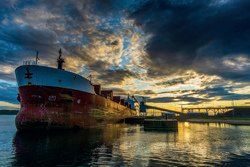 The municipality of Havre-Saint-Pierre, located opposite Anticosti Island, is the capital of Minganie. Founded in 1857 as an Acadian fishing community, it was then called Saint-Pierre-de-la-Pointe-aux-Esquimaux. This town is also a departure point for excursion boats heading to the Park of the Mingan Archipelago. It's a beautiful place for a long walk along the river.
The municipality of Havre-Saint-Pierre, located opposite Anticosti Island, is the capital of Minganie. Founded in 1857 as an Acadian fishing community, it was then called Saint-Pierre-de-la-Pointe-aux-Esquimaux. This town is also a departure point for excursion boats heading to the Park of the Mingan Archipelago. It's a beautiful place for a long walk along the river.
Park of the Mingan Archipelago
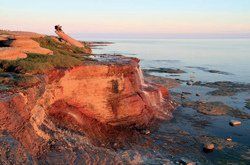 With its magnificent monoliths resisting the ravages of time, the Mingan Archipelago captivates at first sight. The archipelago's islands and islets fascinate as much by their unique flora as by the fauna surrounding them: colonies of seabirds, whales, and seals. Stroll through these grand landscapes from the shore or discover this exceptional natural beauty by taking part in a boat excursion from the marina in Havre-Saint-Pierre.
With its magnificent monoliths resisting the ravages of time, the Mingan Archipelago captivates at first sight. The archipelago's islands and islets fascinate as much by their unique flora as by the fauna surrounding them: colonies of seabirds, whales, and seals. Stroll through these grand landscapes from the shore or discover this exceptional natural beauty by taking part in a boat excursion from the marina in Havre-Saint-Pierre.
MINGAN ARCHIPELAGO NATIONAL PARKSeason: The park is open year-round, but the services' operational period varies depending on the season. Visitor centers: The Havre-Saint-Pierre Welcome and Interpretation Center (1010, promenade des Anciens). The Longue-Pointe-de-Mingan Welcome and Interpretation Center (625, rue du Centre). |
Roland-Jomphe Cultural House
The Roland-Jomphe Cultural House proudly bears the name of poet Roland Jomphe (1917-2003), native of Havre-St-Pierre. You will hear about the significant events in the history of the city from 1857 to present day. The location, which is a former Hudson's Bay Company store, looks like a museum. You will meet characters in period attire.
The Lower Côte-Nord
The Lower Côte-Nord region is a wild coastline extending from the Natashquan River to the Labrador border. It consists of 15 small villages, some of which are still not accessible by road. This isolation has caused variations in traditions, architecture, and even in the way the inhabitants speak. Here, the Gulf of St. Lawrence resembles the ocean. Sometimes, icebergs drift from Greenland can be seen. Salmon rivers also cross the fields and tundra.
CODThe cod fishing that attracted pioneers and fishermen to the region almost completely disappears in the 1990s. Bottom trawling and overfishing in the Gulf of St. Lawrence eventually led to the disappearance of this resource. The collapse of the cod fishery forces residents to take on other economic activities and causes dramatic socio-economic changes in the Lower North Shore region. |
Natashquan
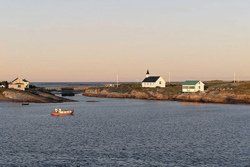 Natashquan is the birthplace of Gilles Vigneault, poet, author, composer, performer, storyteller, an internationally renowned artist who made the place famous. "Small village with the big name", here coexist Amerindians from the Nutashkuan community and Acadians of origin. Natashquan means in French "where we hunt bears". It is the very first village of the Lower North Shore.
Natashquan is the birthplace of Gilles Vigneault, poet, author, composer, performer, storyteller, an internationally renowned artist who made the place famous. "Small village with the big name", here coexist Amerindians from the Nutashkuan community and Acadians of origin. Natashquan means in French "where we hunt bears". It is the very first village of the Lower North Shore.
The Old School
The old village school, which once welcomed young Gilles Vigneault, has been restored and now houses an exhibition on the poet's work. He is honored through some of his famous characters. The school is modest, but this nod bears witness to the attachment and pride of the people here to this great man. A great opportunity to discover Natashquan through some Vigneault's songs. Let yourself be lulled by these beautiful stories filled with poetry.
La Romaine (Unamen Shipu)
La Romaine, located near the mouth of the Olomane River, has a small population of Francophones juxtaposed to a large reserve of the Innu nation called Unamen Shipu (La Romaine in French). This name means red ochre in Innu, referring to the reddish color of the spring runoff waters. Accessible only by plane or boat, or by snowmobile in the winter season. WELCOME! KUEI!
A LITTLE HISTORYFor a long time, indigenous people left their inner hunting grounds after winter to gather at the mouth of the Olomane River during the summer. In the early 18th century, the French opened a fishing and trading post at the mouth of the Olomane River. This post became a meeting place for the nomadic Innu and the more sedentary Europeans of the coast. The British took control of the post in the 1760s, followed by merchants from Quebec City. Around 1850, French Canadians from elsewhere in Quebec began to settle in the region. The trading post closed in 1925. Many Innu from the Lower North Shore, known for their travels by birchbark canoe and snowshoes, are still nomadic today. |
THE INNUQuebec is home to 11 indigenous nations, spread across 55 communities of varying sizes, from a few hundred to a few thousand people. The Innu have a historical presence in Quebec that dates back nearly 10,000 years. The term "Innu" means "human being" in English. This name was officially adopted in 1990, replacing "Montagnais", given by the first French explorers. The name Nitassinan is used by the Innu to refer to their ancestral land. They traditionally adopt a nomadic lifestyle, moving in search of the best hunting grounds by following the movement of game. Under the strong influence of governments and the Church, most have now settled. The Innu of the Lower North Shore are one of the last groups of nomadic Indigenous people in North America. |
Unamen Shipu Site
This Innu reserve dates back to the mid-1950s. Many Innu here still maintain their traditional nomadic habits. At the end of summer, they go upriver to hunt and fish inland, and each year in May, they move back to the coast. By engaging with them, you will learn a lot about their fishing methods, culture, and history. They will happily share their extensive knowledge about plants, collecting wild berries, the rich wildlife of the islands, and more.
Île Apinipehekat
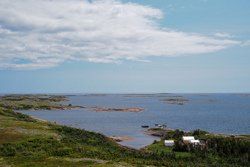 Apinipehekat, an Innu word meaning "narrow passage to the East", is located near the Unamen Shipu community. It's a site of exchange and immersion in ancient Innu culture. This site is your base camp to discover the fauna, flora, and hundreds of islands in the Sainte-Marie archipelago. Immerse yourself in the inspiring Innu culture! You will be forever marked...
Apinipehekat, an Innu word meaning "narrow passage to the East", is located near the Unamen Shipu community. It's a site of exchange and immersion in ancient Innu culture. This site is your base camp to discover the fauna, flora, and hundreds of islands in the Sainte-Marie archipelago. Immerse yourself in the inspiring Innu culture! You will be forever marked...
Where to eat
- $ Inexpensive
- $$ Moderate
- $$$ Upscale
- $$$$ Fine dining
Good restaurants are rare on the Lower North Shore. Take advantage of your immersion to eat at home, like the locals, or have picnics in nature.
SEPT-ÎLES
LES TERRASSES DU CAPITAINE ($$-$$$)
This popular restaurant offers a wide array of seafood and fish on the menu. You eat in a giant lobster cage filled with sea-themed decorations! Hearty dishes and excellent service. Given the crowd, it's better to make a reservation.
LE MANOIR ($$$)
In Sept-Îles, this restaurant offers a refined experience with a varied menu ranging from fresh seafood to well-crafted meat dishes. The view of the St. Lawrence River is an additional asset, perfect for a romantic dinner. Their well-stocked wine list perfectly complements the dishes.
RIVIÈRE-AU-TONNERRE
MAISON DE LA CHICOUTAI ($$-$$$)
La Maison de la Chicoutai, située à Rivière-au-Tonnerre en pleine Minganie, vous propose une gamme unique de produits du terroir, tels que coulis, gelée, confiture, vinaigrette, tisane et beurre, tous confectionnés à partir de la chicoutai et de l’airelle. Récompensée pour la qualité de son accueil et de ses produits, il s’agit de l’arrêt idéal lors de votre séjour sur la Côte-Nord.
HAVRE ST-PIERRE
RESTAURANT DE LA PROMENADE ($$-$$$)
The locals in the village will certainly advise you to dine at the Promenade restaurant to enjoy the sea view. The menu includes, among other things, fish and seafood dishes at affordable prices. The service is quick and friendly. Highly recommended!
CHEZ JULIE ($$-$$$)
Don't be fooled by the exterior appearance of the building, this place is highly appreciated by locals and visitors. Open since 1977, this small family restaurant is renowned for its famous seafood pizza, fresh lobster in season, trawlerman's platter, or its cloudberry pie. Varied menu and warm service.
ANTICOSTI ISLAND
L'AUBERGE PORT-MENIER ($$$)
The inn, on Anticosti Island, offers a culinary experience showcasing local products such as game and seafood. The menu changes with the seasons, ensuring freshness and authenticity. It is the ideal place to enjoy a generous meal in a warm atmosphere.
Where to sleep ?
- Stay with the Innu
- Auberge McDonald
- Chalets Didoche
- Vieux Townside Motel
- Du Havre Hotel/Motel
- Les Maisonnettes des Îles
- Loiselle Family
- Birdhouse
- Auberge La Cache
- Comfort Inn Sept-Iles
- Château Arnaud
- Le Voyageur Hotel
- Best Western Ville-Marie
- Fairmont Reine Élizabeth
- Les Suites Labelle
- Hotel 10
- Hôtel le Germain Montréal
- Hyatt Place Montreal Centre-Ville
- Hotel Le Manoir
Location
Travel reviews
Magical landscapes
(Translated by Google) Superb panoramas!












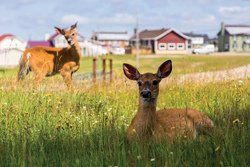 Until his death in 1913, Henri Menier invested heavily in the development of the island. Many of his decisions radically changed the face of Anticosti. He first developed the village of English Bay, which he renamed Baie Sainte-Claire. After a few years, he moved his installations to Ellis Bay where he founded a new village, Port-Menier, and built himself a sumptuous villa.
Until his death in 1913, Henri Menier invested heavily in the development of the island. Many of his decisions radically changed the face of Anticosti. He first developed the village of English Bay, which he renamed Baie Sainte-Claire. After a few years, he moved his installations to Ellis Bay where he founded a new village, Port-Menier, and built himself a sumptuous villa.
